How To: Use a Pin Frog
A Tutorial by Alyssa Lytle, owner of Flowering Minds
Part 1 of a 3-Part Series (Click here to see Part 2)
Pin Frog provided by Floral Genius
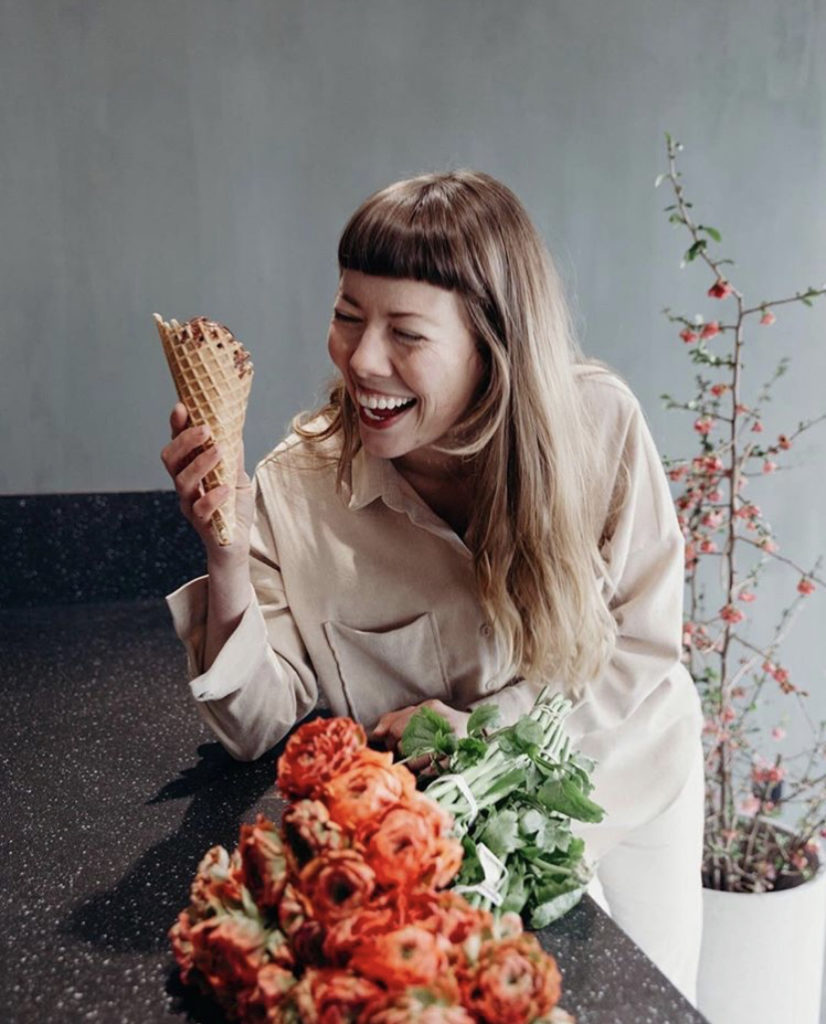
I started this floral journey about 12 years ago in a daily shop. I began by washing buckets, learning what all the flower names were and was tasked with very basic design work. I stuck with daily shops not really knowing that there was a whole different floral world to be had. Halfway through my career I discovered event design and made the switch. I began seeing floral design as more of an art form and began truly valuing the shape, movement and colors that could be created with the whole world of blooms out there. After a few years with my own business, I began wondering why daily shops tend to stick with such simple, dense designs and began brainstorming how to merge a more artful and luxury design into an everyday arrangement for delivery. I didn’t understand why we couldn’t bring that same level of design, shape and movement to our clients on a daily basis.
Enter: pin frog, floral frog, kenzan, whatever you choose to call it!
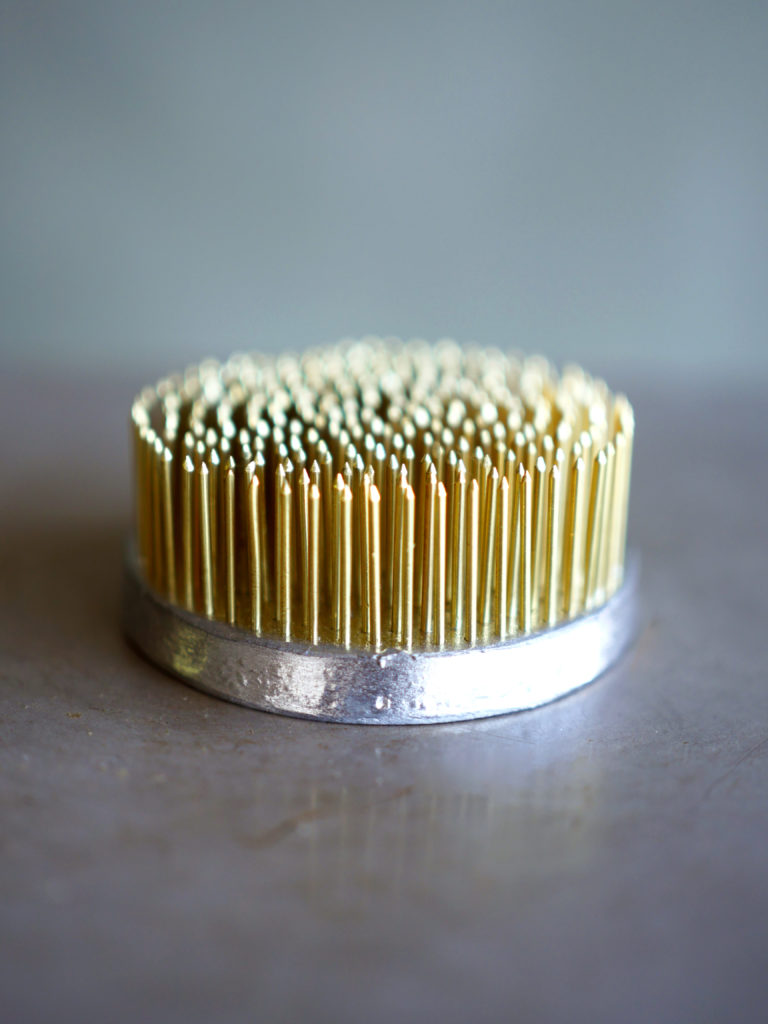
Why Use a Pin Frog?
A pin frog enables us to use long and carefully placed stems to create drama and movement. It provides incredible stability and we can be confident there won’t be much shifting in transit. The only way to place stems with dramatic movement and length otherwise is to pack the vase full of product and hope that’s enough to keep the stems where you want them, although a lot of shifting will still occur. We feel that a densely full vase loses its shape and movement, hence the pin frog! We always fill our vases to value, but the pin frog enables us to use less quantity of stems. At first this may not sound like a good thing, especially to our customers. However, this means higher quality, premium blooms, no cheap filler, and no cheap flowers just for the sake of filling the vase. Each stem we use is simply because it is magnificent and just the right color and shape for the design.
The Pricing Logistics
We have heard many florists feel deterred from using a pin frog in daily orders for delivery due to the cost. We have chosen not to make a profit off the sales of our pin frogs, as it saves us time in the design process (it makes for fairly fast design work) and it makes it much easier to stay within budget, flower-wise. We do mark our vases up and then simply add the wholesale price of the pin frog, which generally adds up to $15-$20 total. We do not present this as optional, as most non-floral designers wouldn’t choose to add that extra cost, but we know the difference it makes in the design, so we simply say this is the vase cost, if asked. We then encourage our “Vase Recycling Program” which enables our customers to return the vase/frog combo for a $15 floral posy.
Supplies You’ll Need
- 2.5-3 Inch Pin frog from Floral Genius
- 4 x 4 inch low glass cylinder
- Sticky putty (ex. Floralife Sure-Stik Floral Adhesive)
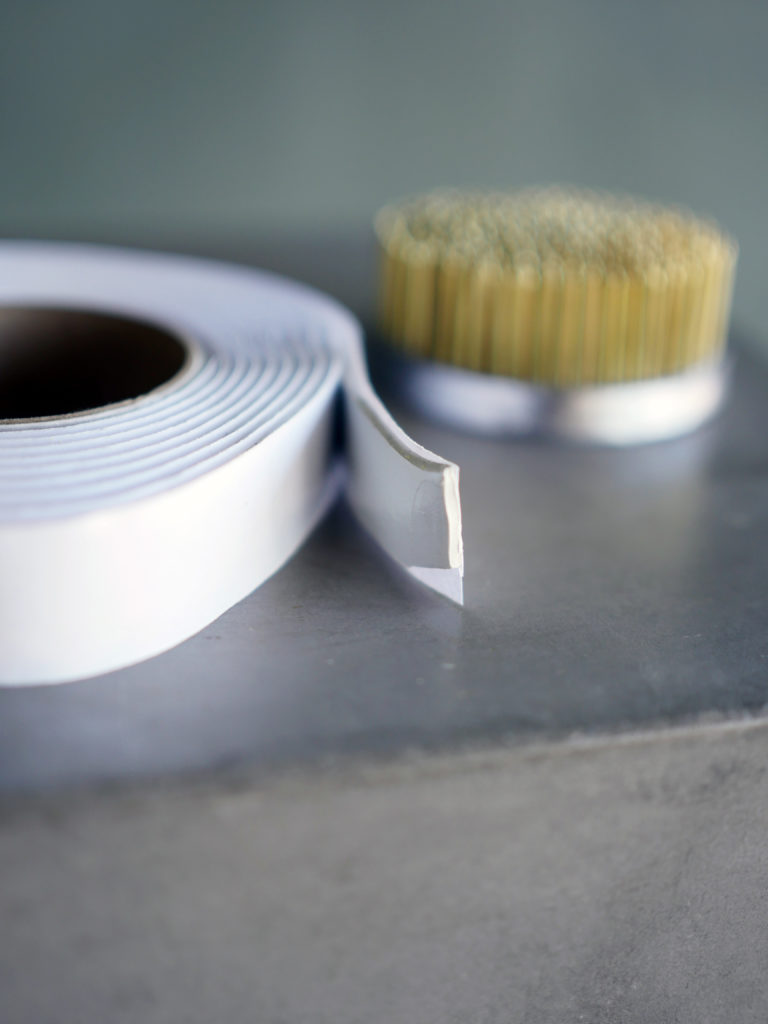
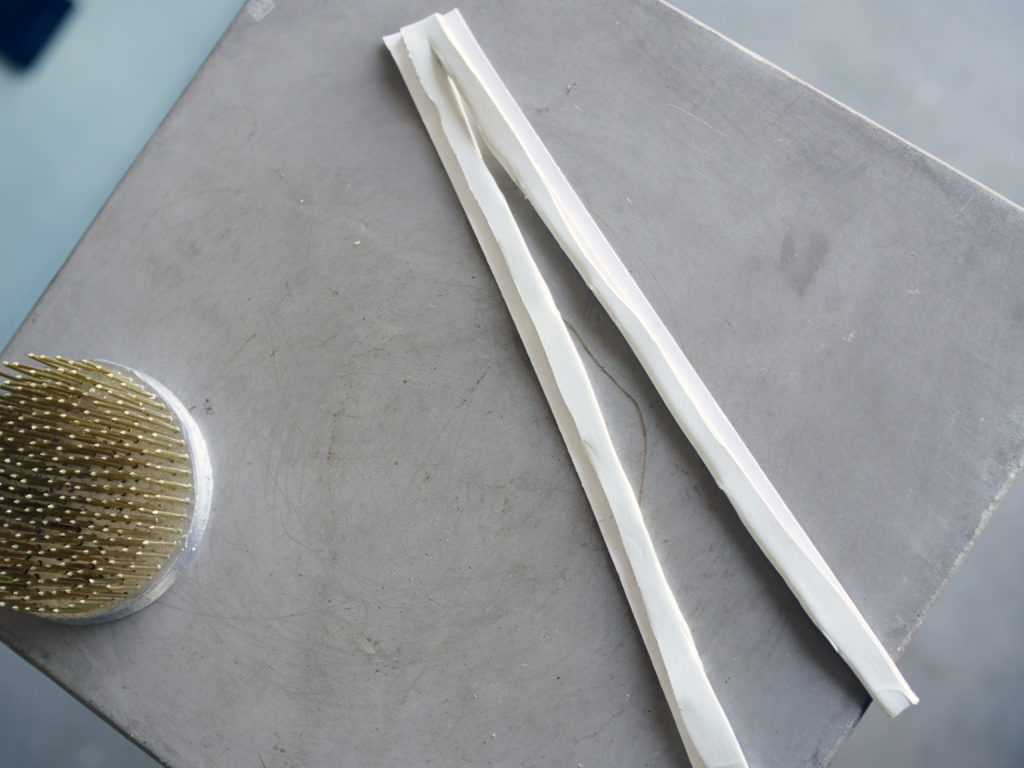
Step 1
Be sure your vase is completely clean and dry on the inside. Sticky putty will not stick or stay stuck if it is used on a dirty/dusty, damp surface. Cut a strip of sticky putty, do not pull it to break it. If you pull it the thickness will vary and placing the frog will be a little trickier. Once you’ve cut the strip of sticky putty you can cut that in half to get more use out of your roll, or you can use the entire amount. Gently peel the putty, touching it as little as possible, and place it on the bottom of the frog, being sure to allow it to meet end to end. The less the putty is stretched and touched, the easier it will be to create strong suction onto the vase.
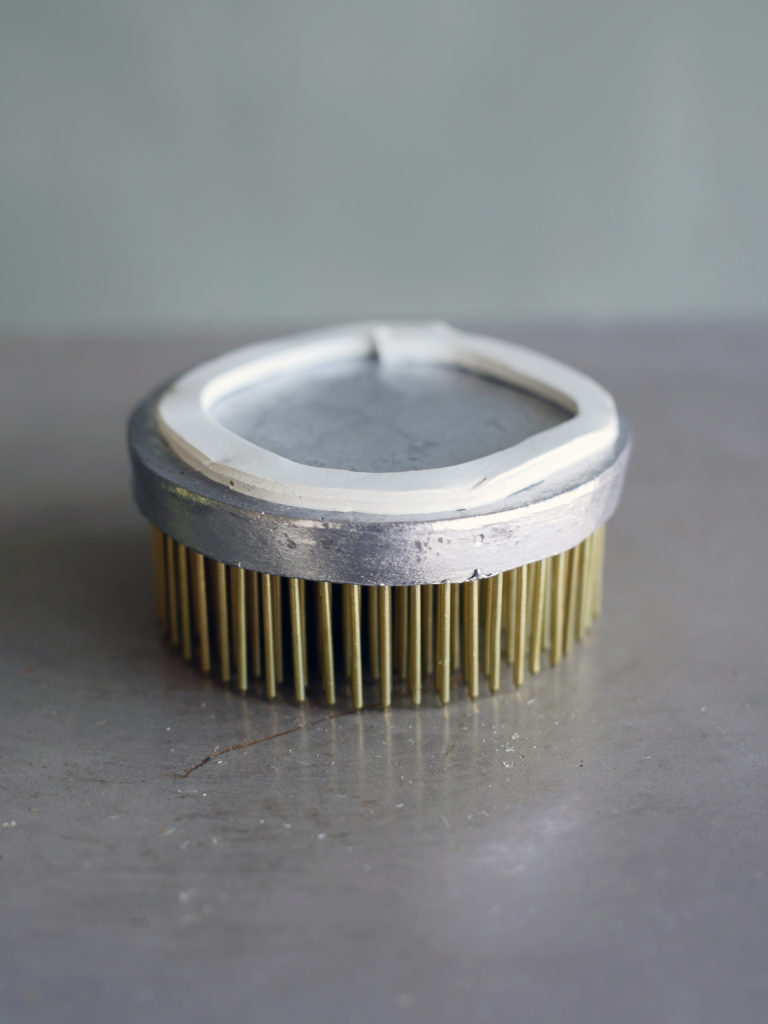
Step 2
Again, be sure the inside of your vase is completely dry. Firmly press the pin frog onto the bottom of the vase and twist while pressing down. You can look at the bottom of your vase and see if the sticky putty has created contact with the glass all the way around the circle of the putty. If there are any air bubbles where it hasn’t created contact, the water will be able to seep under the pin frog, it will come loose during design and this is extremely frustrating as you will have to start completely over. For extra firmness (particularly if your studio is hot) you can place the vase/pin frog combo into the cooler. The putty will become more solid in lower temperatures.
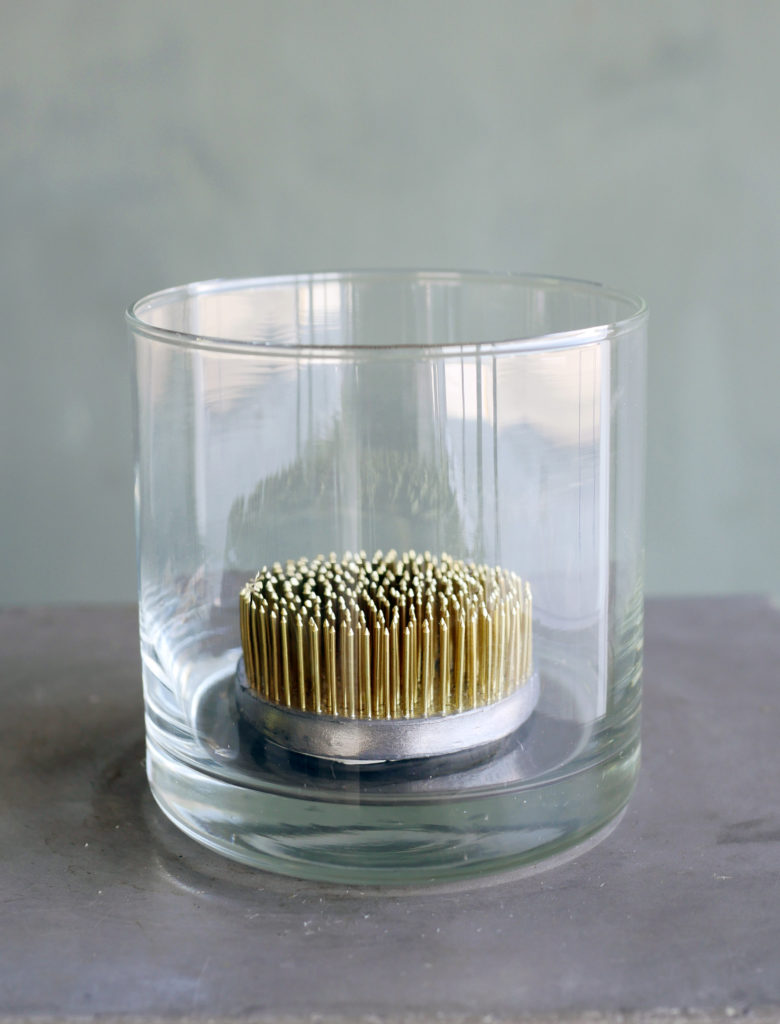
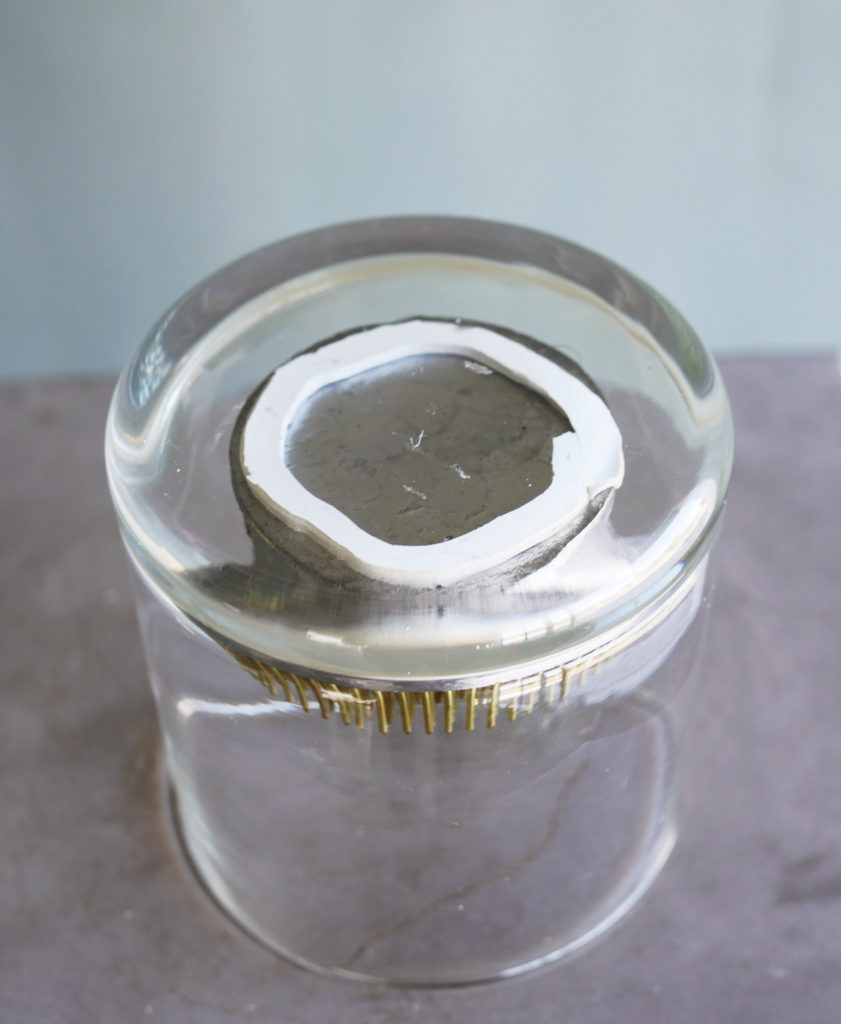
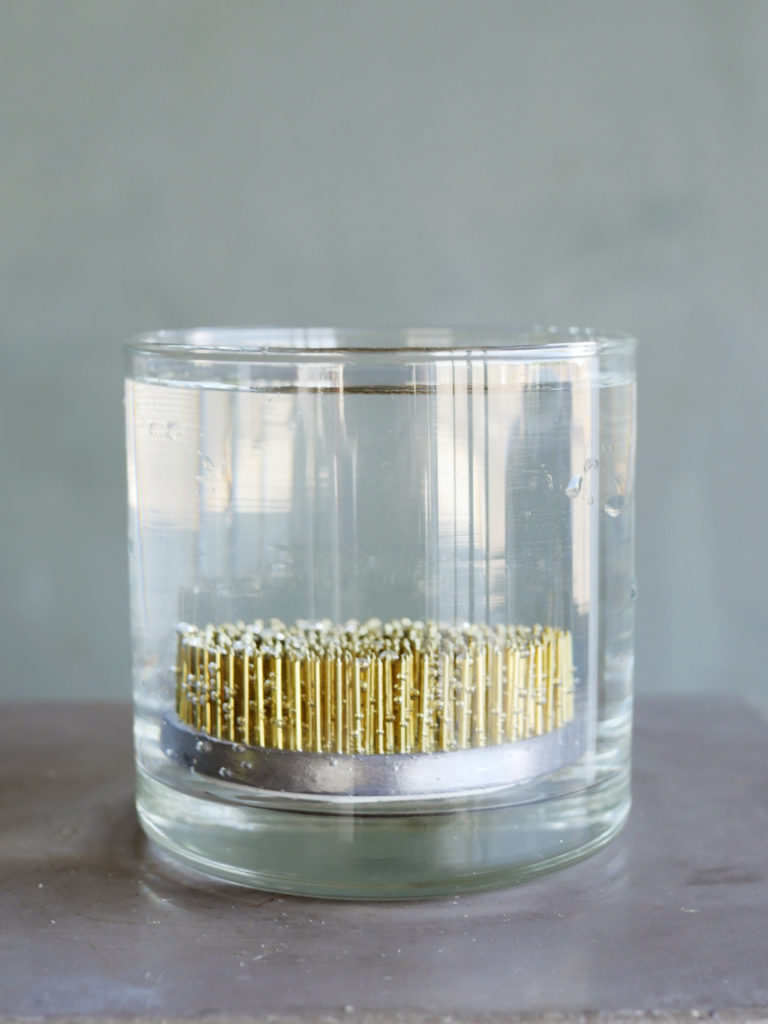
Step 3
Begin designing! I begin my designs by using stems that are both very hearty/sturdy, as well as the stems that are curved and therefore inform the shape of the floral design. By beginning with these types of stems you can create a strong grid for your tinier, fragile flowers to be held in place by. Very small stems will not be held in place by a floral frog alone and require a grid of stems to be intertwined in.
Here I have chosen to begin with the orchids. They have a beautiful shape that I will allow to guide the design, as well as thick, strong stems that will be held by the pin frog beautifully.
When cutting stems for a floral frog, it is helpful to cut the bottom of each stem so the angle of the cut is parallel to the bottom of the vase, depending on the angle that you want the flowers to emerge from the vase.
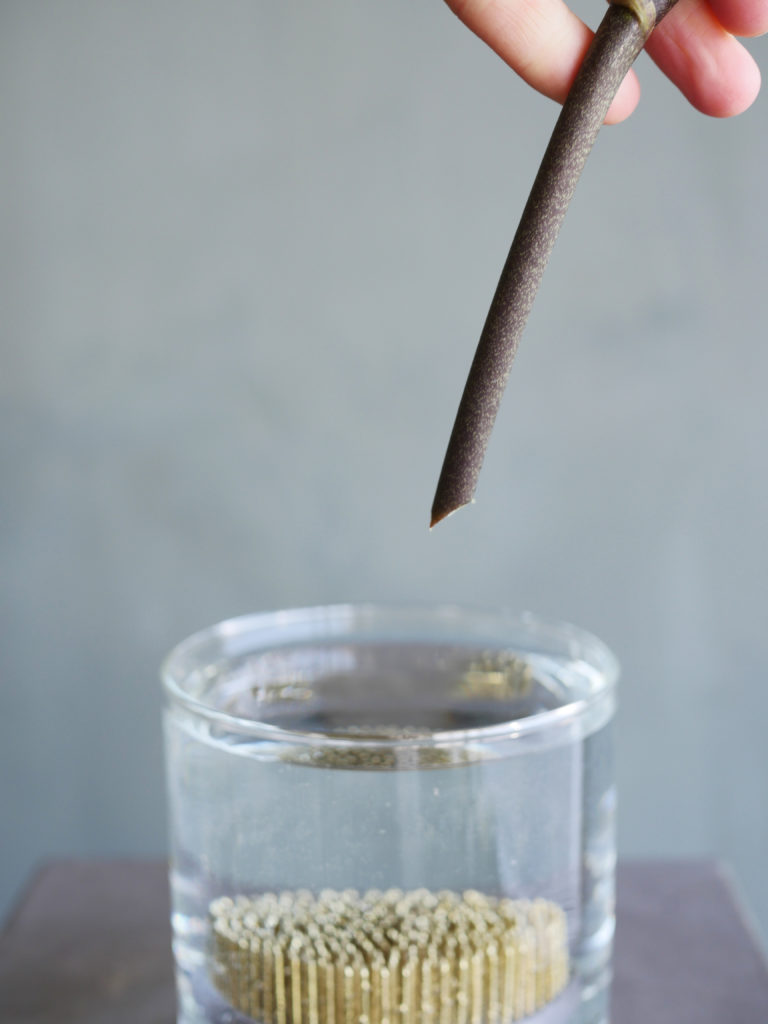
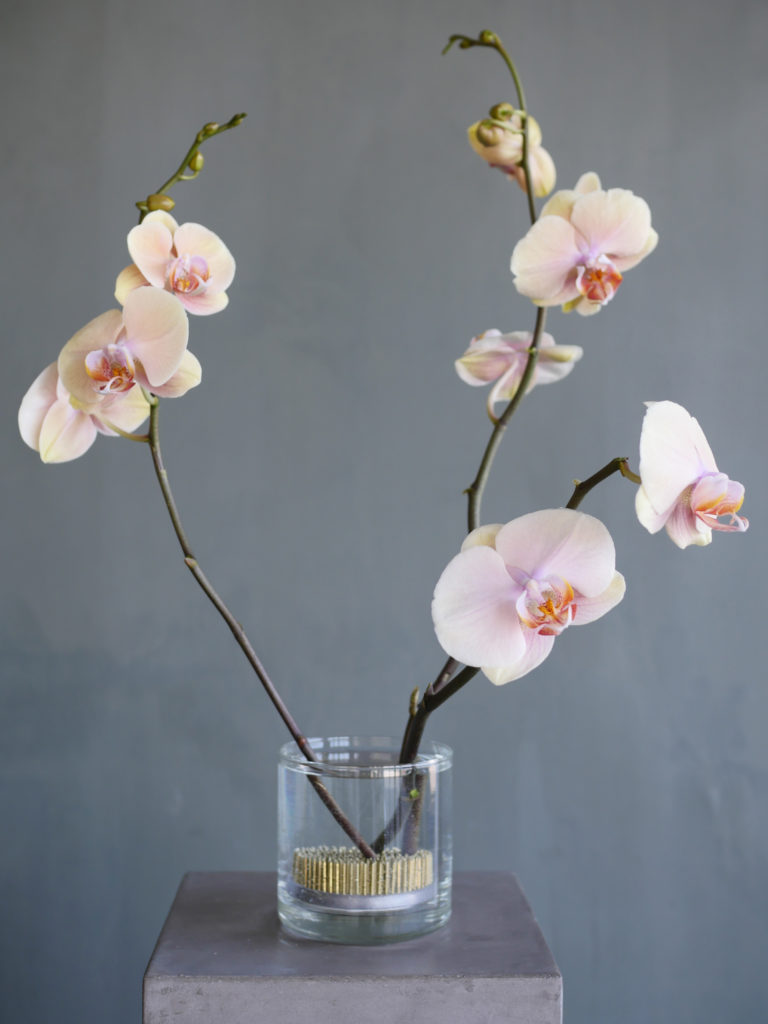

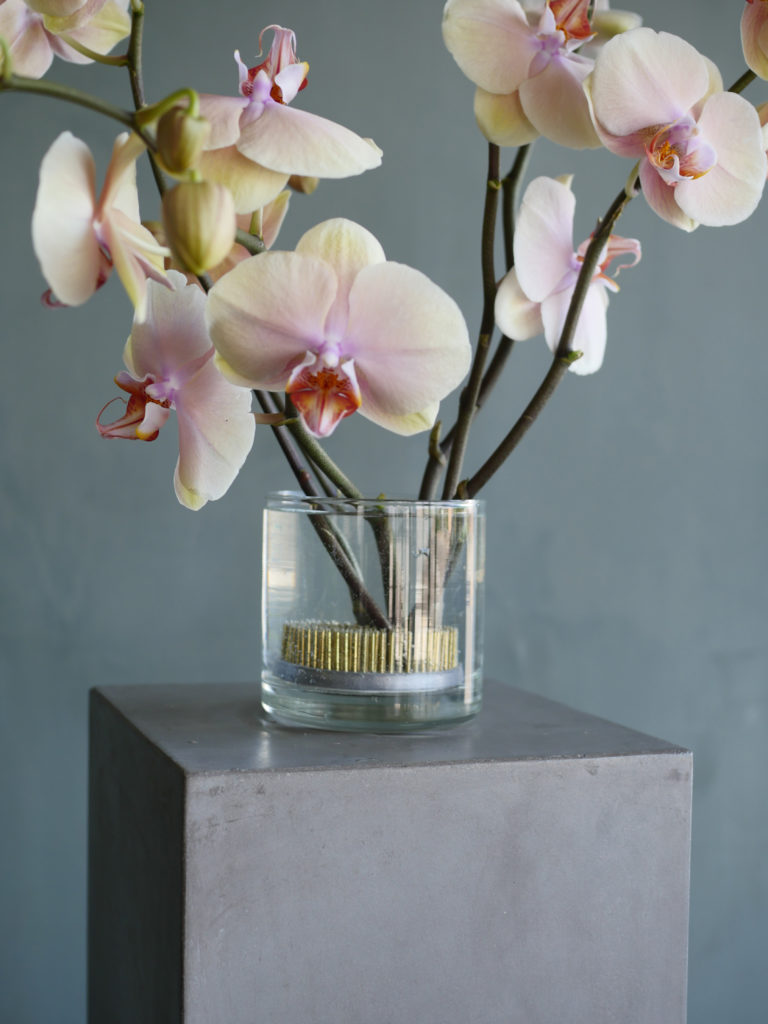
Step 4
Continue to use your larger focal flowers first, rather than smaller, more fragile blooms. Pay close attention to the curve of the stems and utilize these different shapes and curves. Here I have a curved rose. I am going to use the curve so the stem can be placed straight down into the frog, but the face of the flower will still be facing the viewer, rather than facing the ceiling.
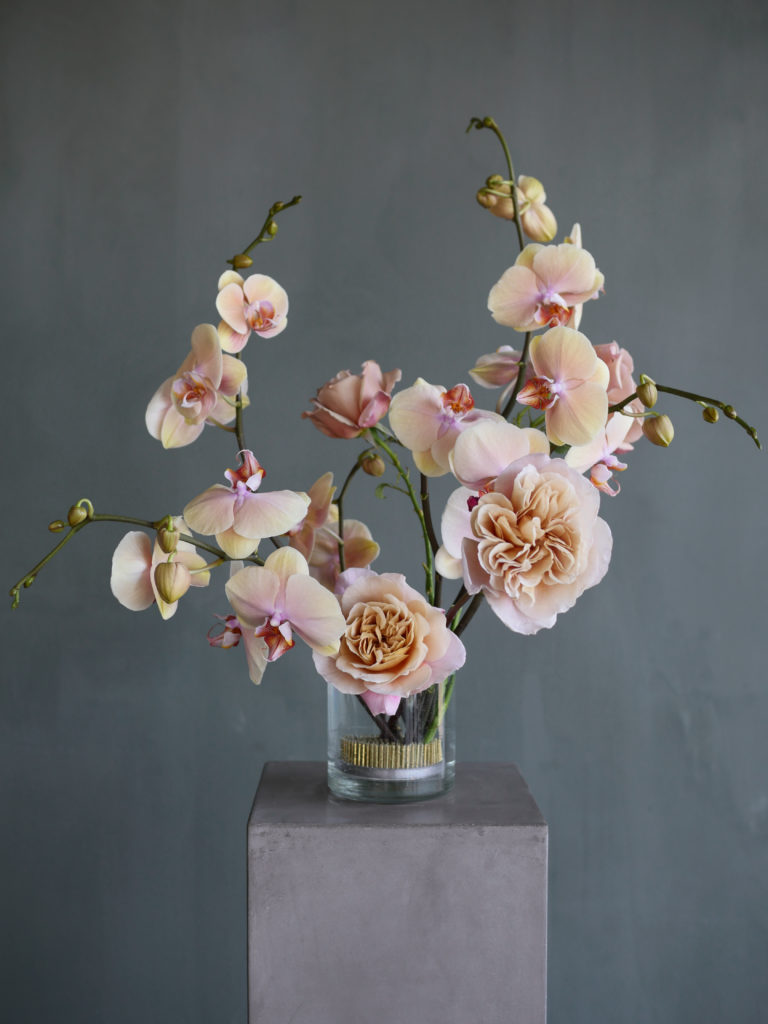
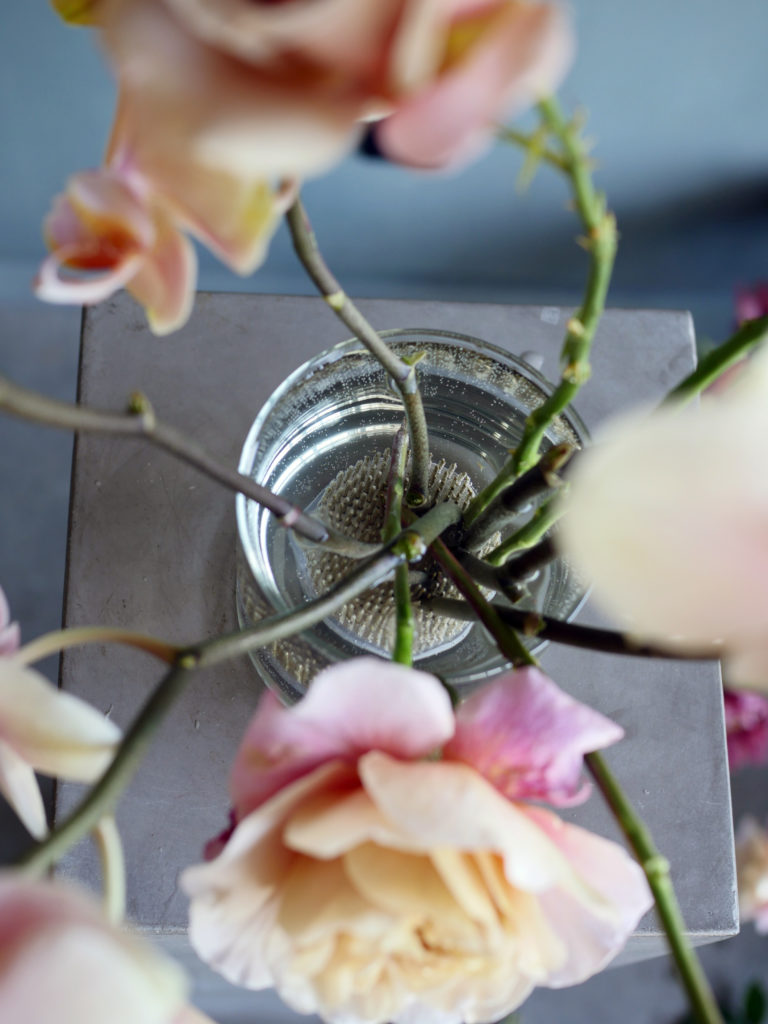
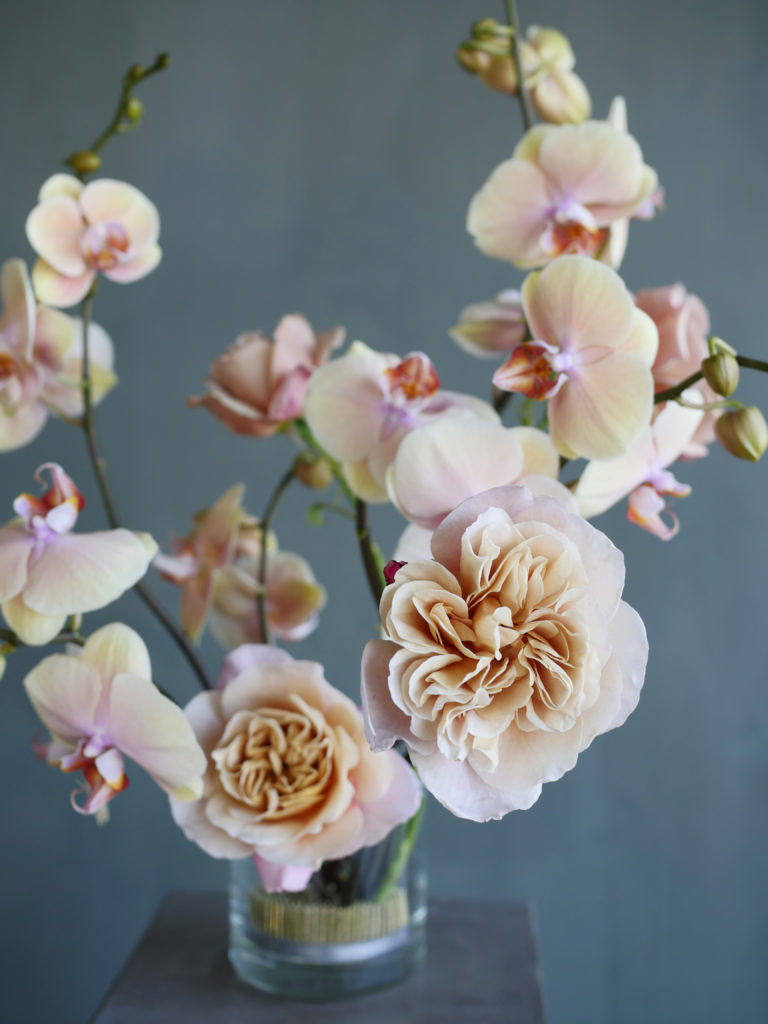
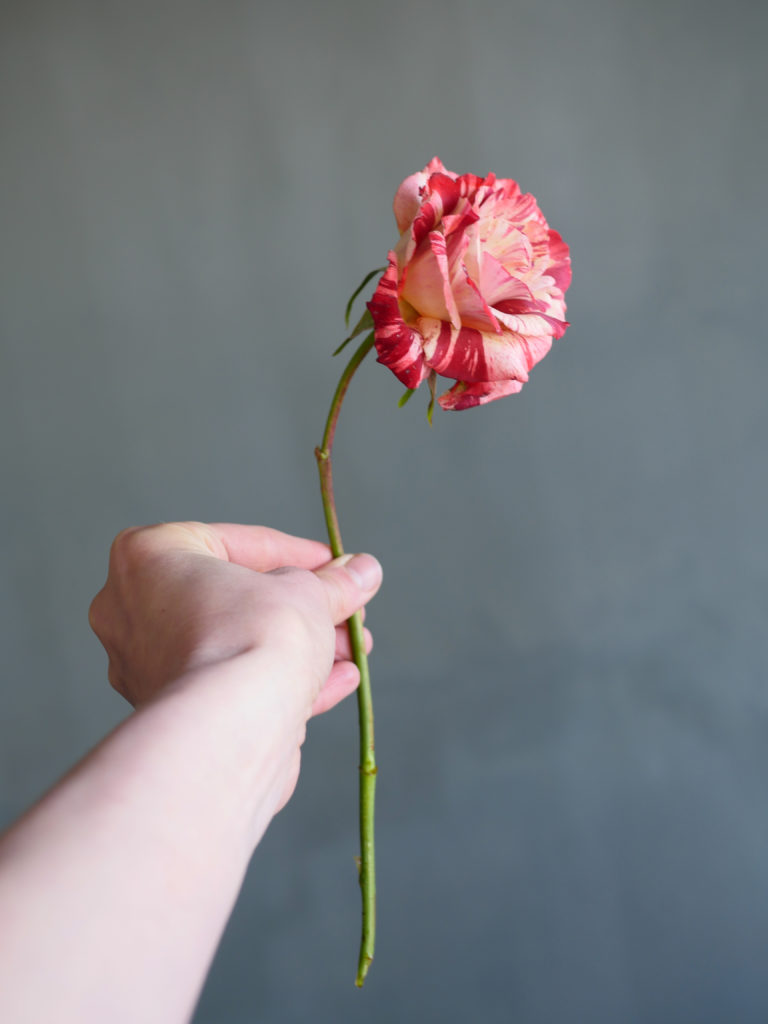
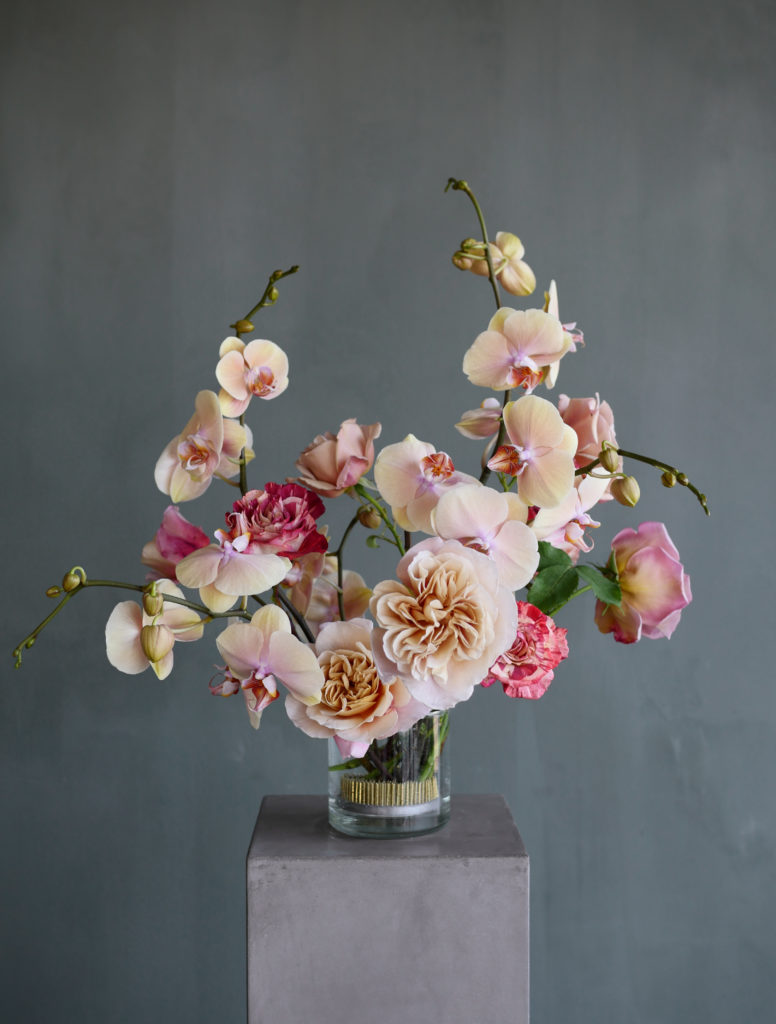
Step 5
Now you have a strong grid of hearty stems placed deep into the flower frog. These should have little movement and can now be utilized to hold longer more fragile stems in place. You can now begin adding a little more drama to your shape by placing flowers at a more dramatic angle through the grid of stems you’ve created. Here I placed some delicate peonies, martagon lilies and garden roses to give the design a looser feel.
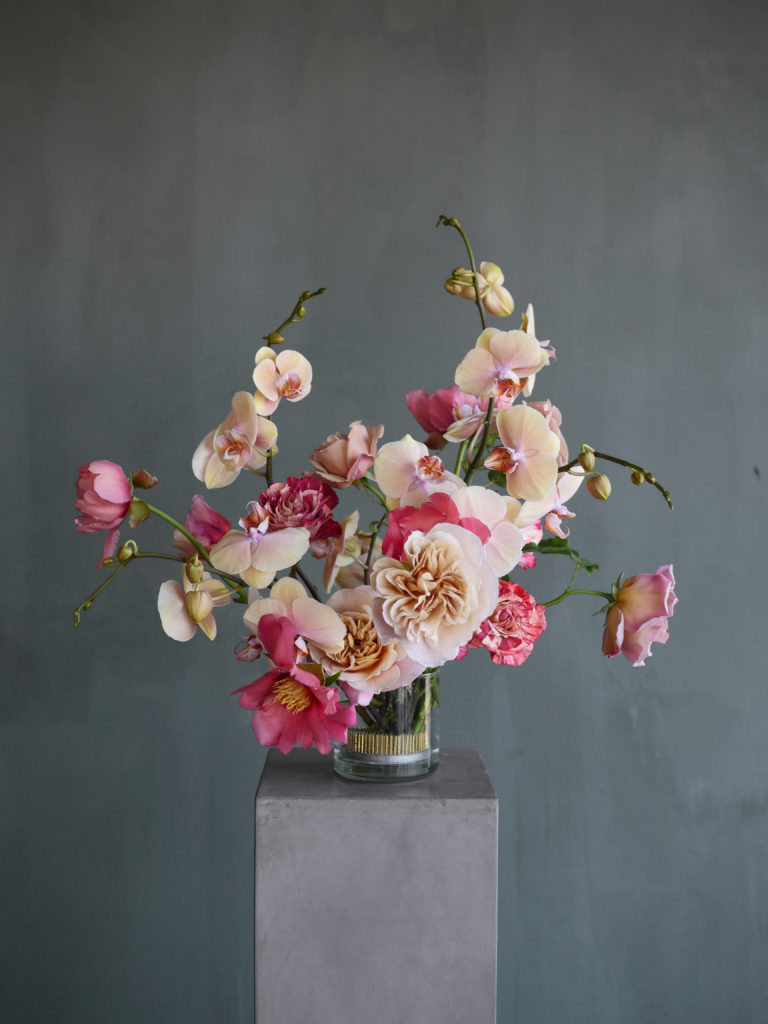
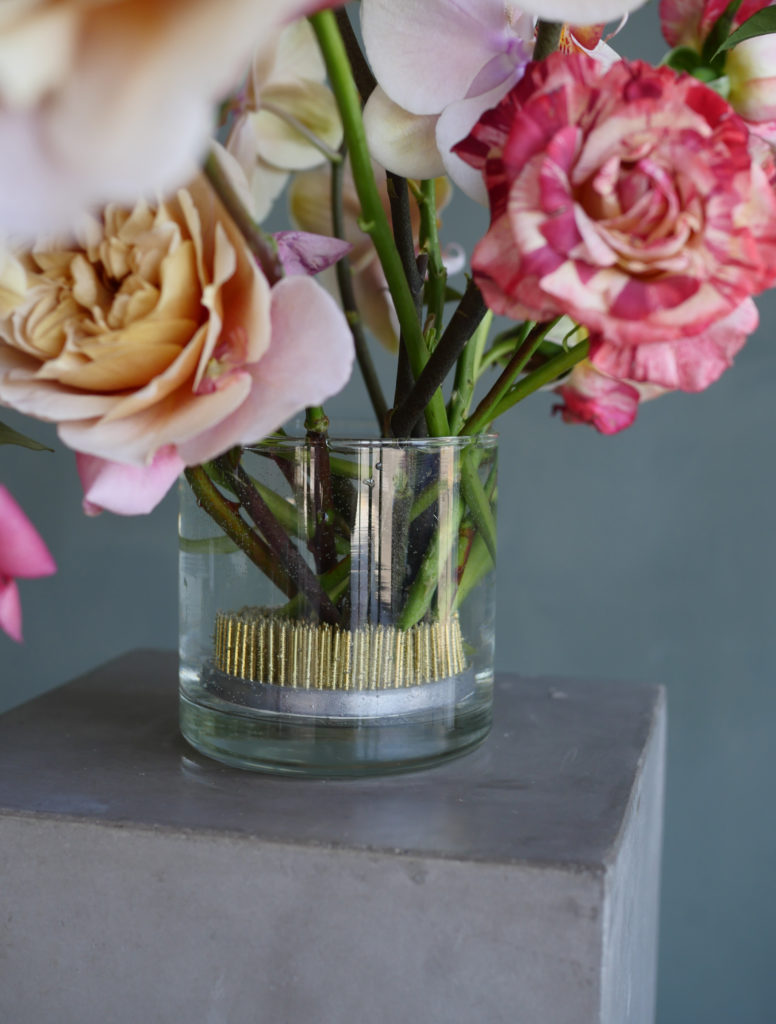
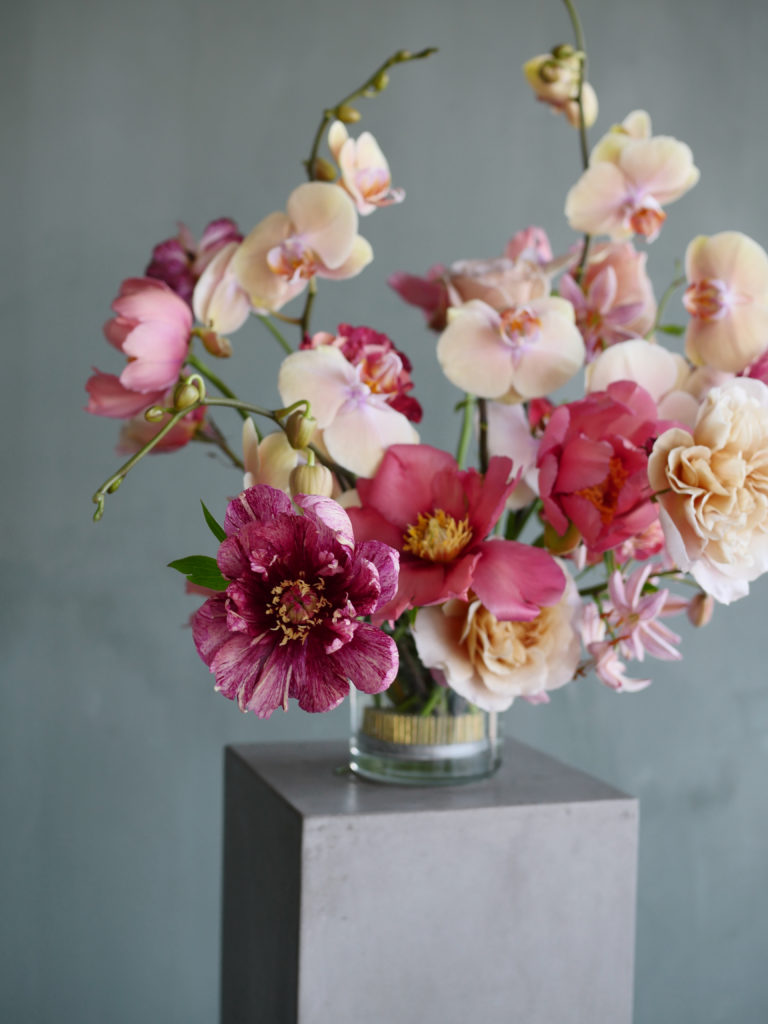
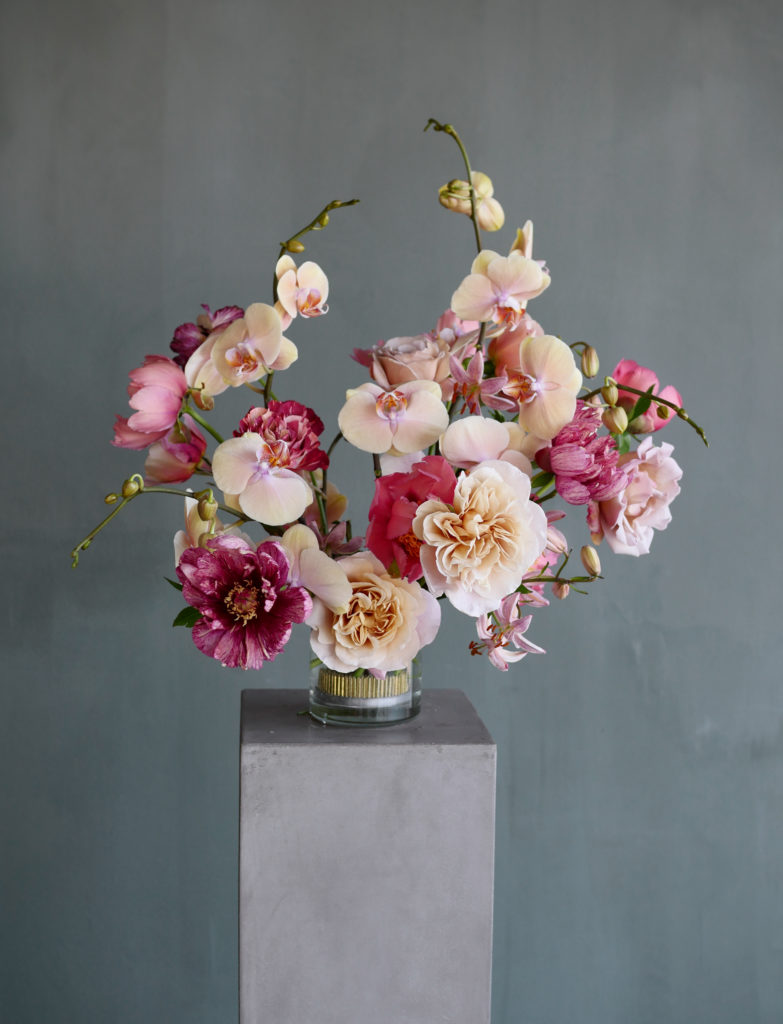
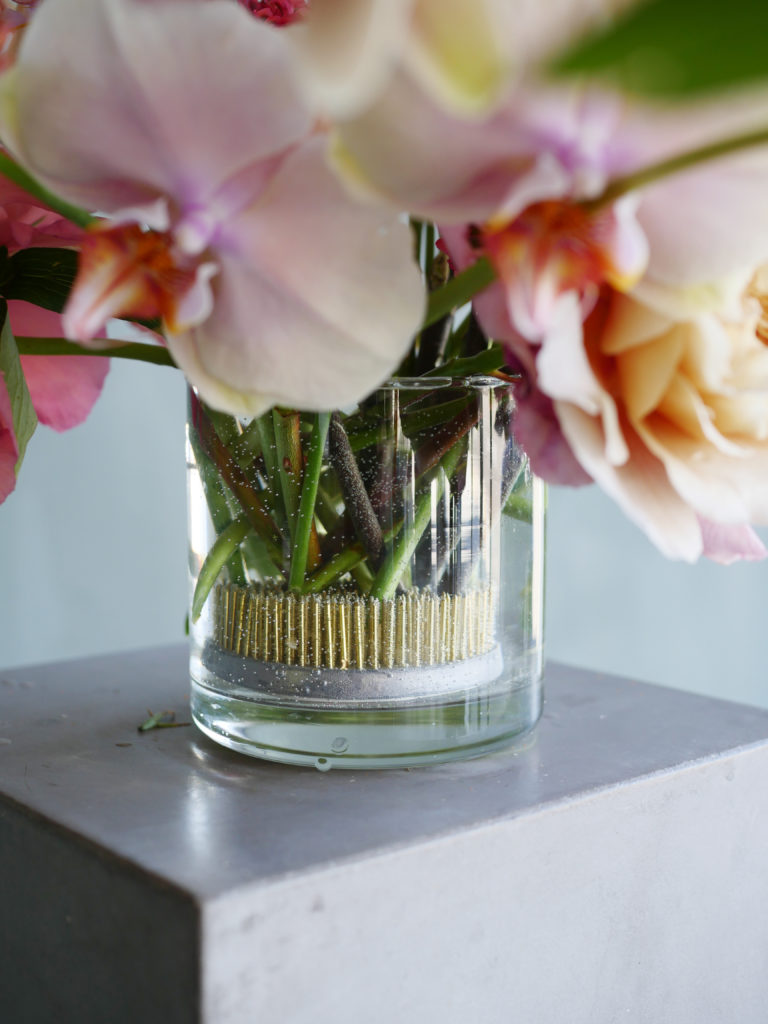
Step 6
I have kept the center of the design fairly empty at the point so I can easily have access to the pin frog and so the design doesn’t feel too dense, too fast. I will now add several delicate, smaller blooms to the center to cover the mechanics and stems you can currently see. I am using a few small pon-pon ranunculus.
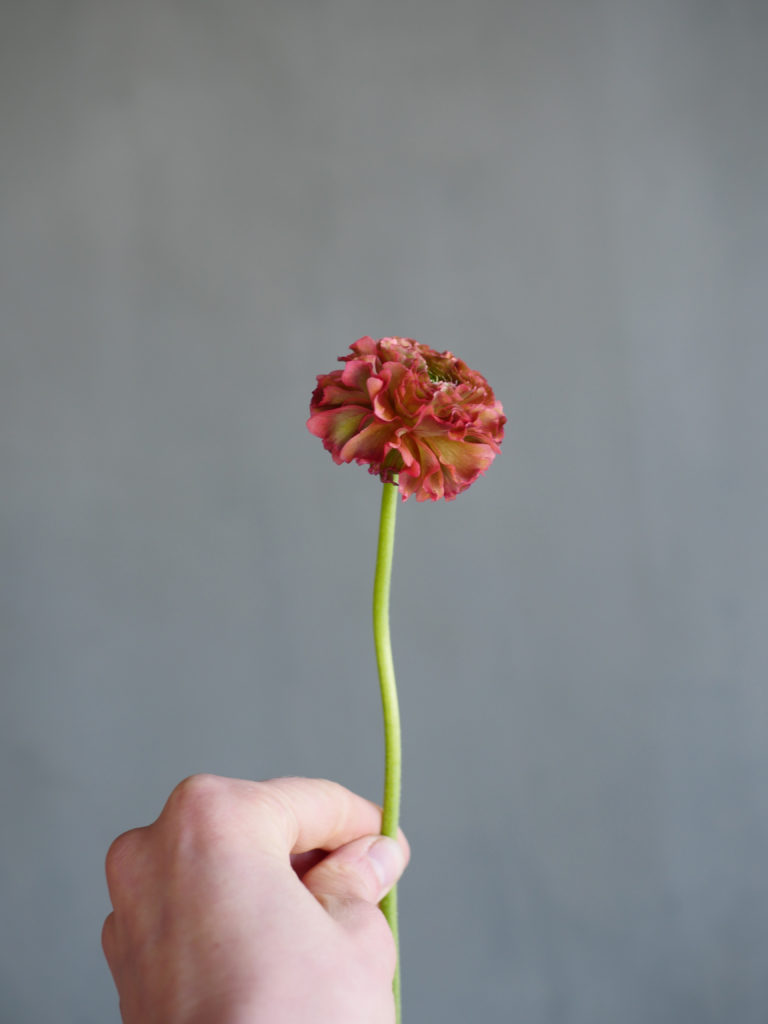
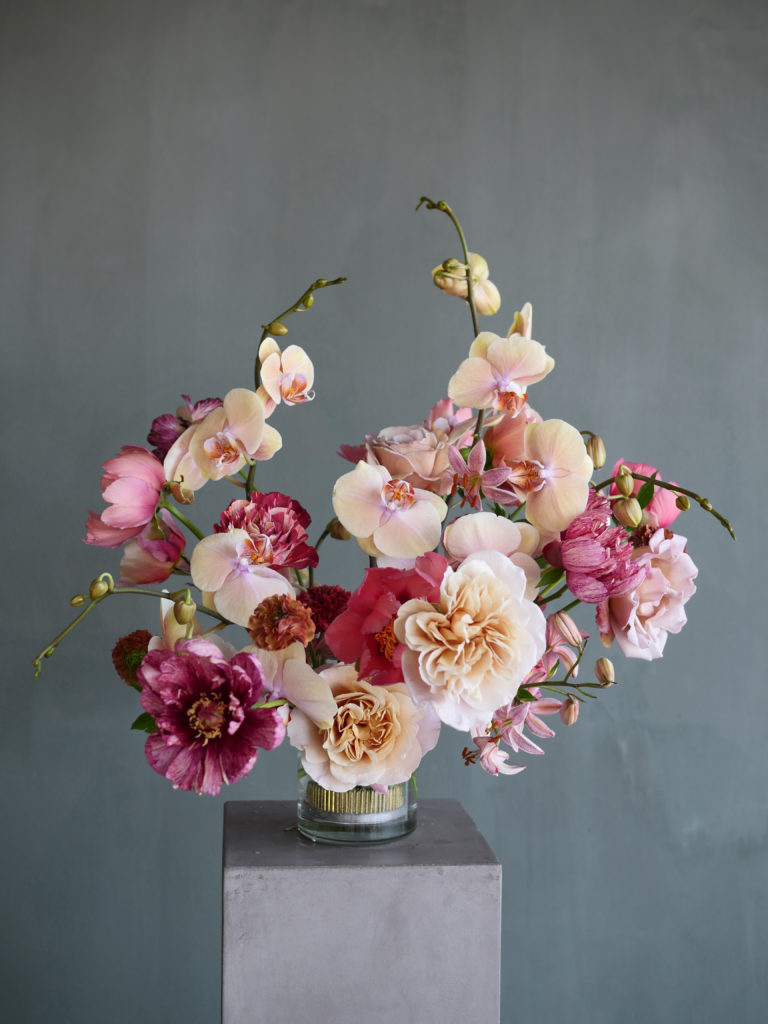
Step 7
Now for the ultra delicate and light accent blooms! I am adding a few bachelor buttons to create some visual interest and contrast. These stems are very very tiny and therefore will only stay in place when there are a good amount of stems to hold them. Because you have such a solid grid of stems in place, you can place the delicate blooms freely and they should stay fairly easily. I am also adding very delicate and tiny-stemmed larkspur. These have beautiful length and at this stage they will stay in place very easily and placement isn’t too difficult to figure out. Having allowed the orchids to inform the shape here, I simply add the larkspur to accentuate the shape that is already there.
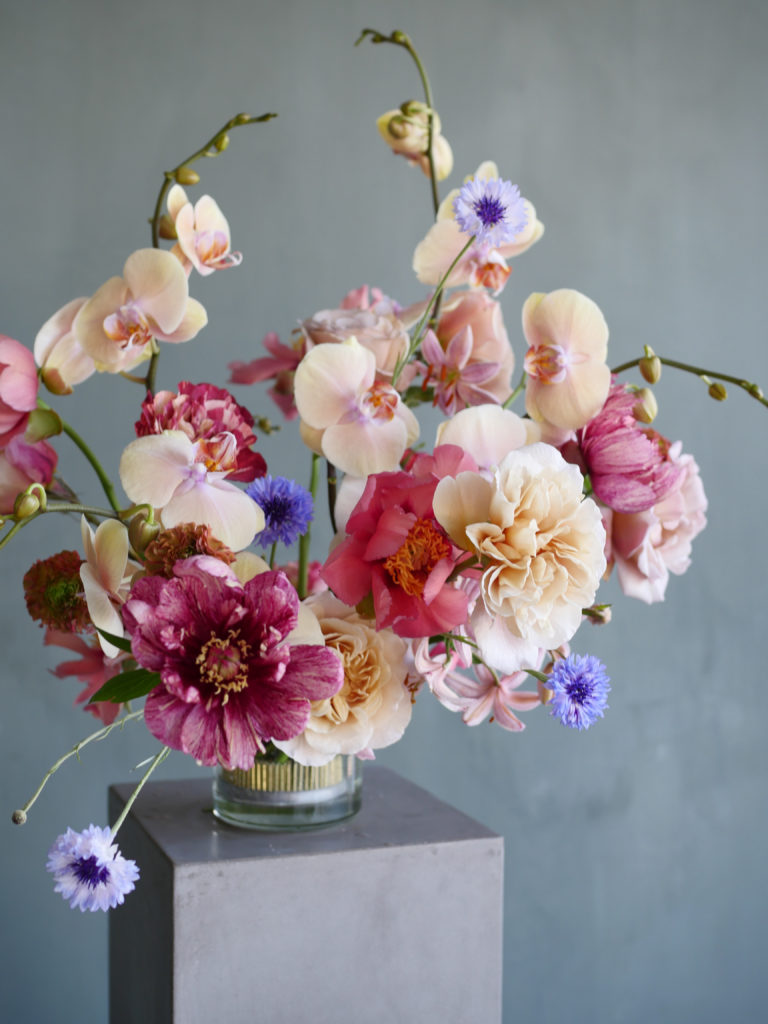
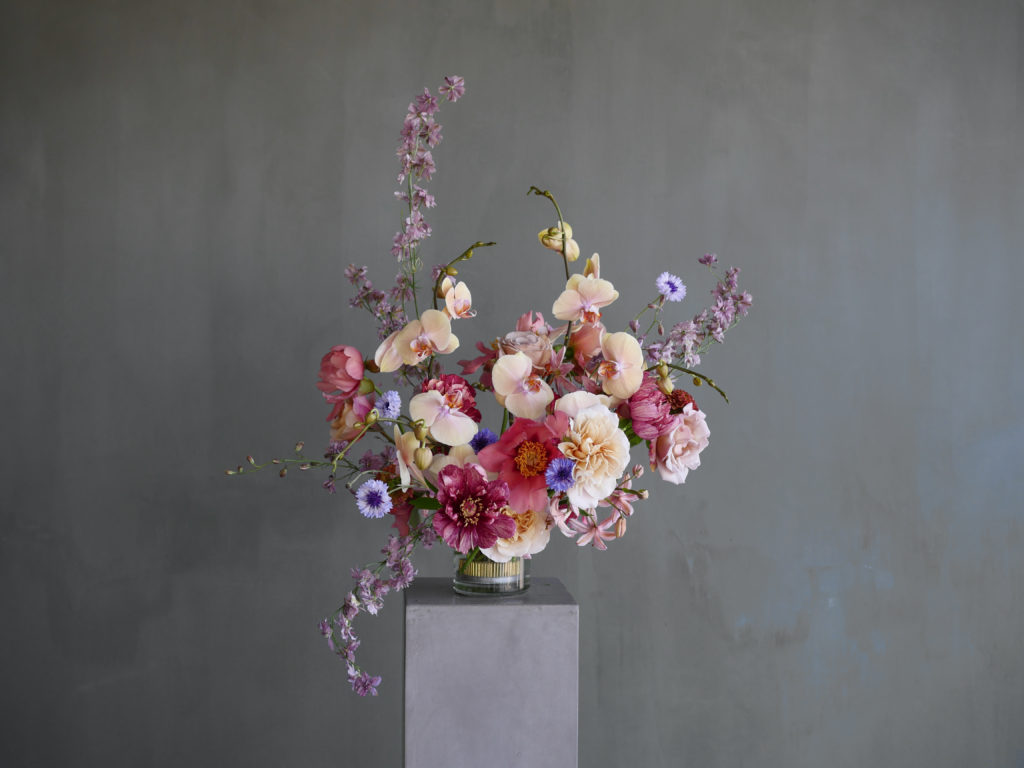
Step 8
You now have a finished product! Be sure to flush the vase water so your customer can receive a completely fresh design with clear water. I don’t generally use a lot of greenery, but if you like to use greenery in your designs I highly recommend doing that last. You can fill any holes you may see or cover the vase edge with bits of greenery. Since a pin frog is present you do not need greenery to hold flowers in place!
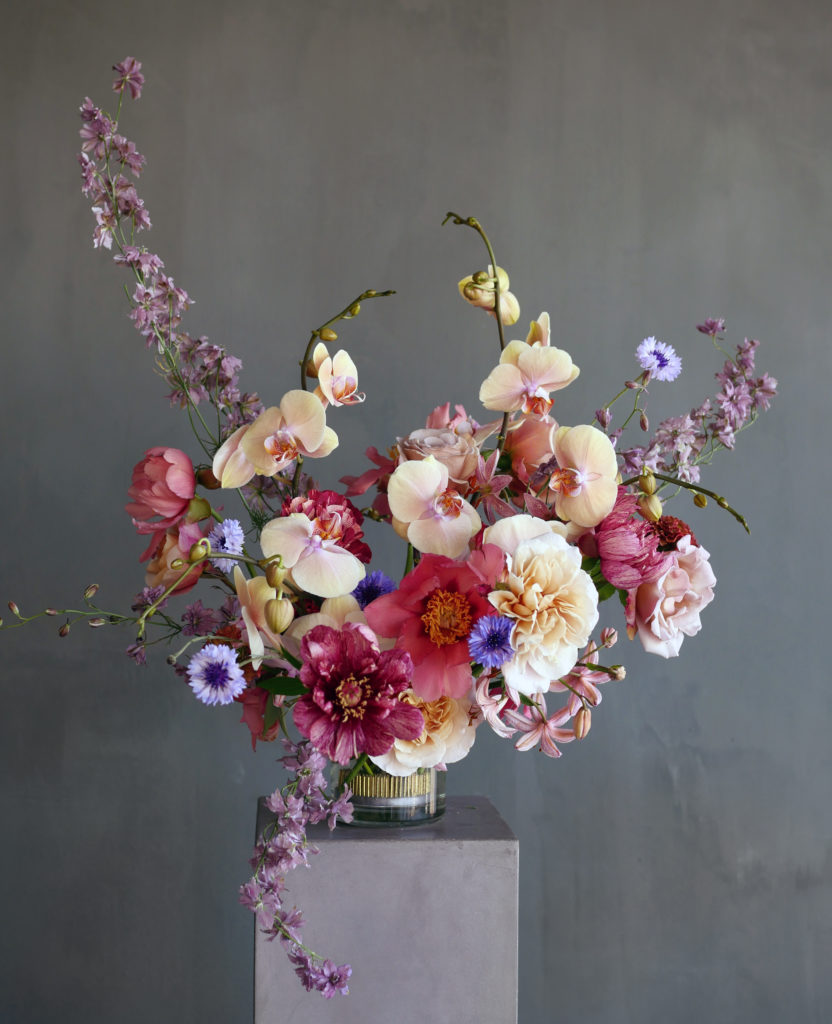
Additional Notes: You can reuse the vase with the pin frog intact for a very long time if it’s put in correctly! A lot of mine I simply can’t get out and when I’ve tried prying it the glass broke…so unless it falls out or I can feel it wiggling, I keep them in indefinitely. To remove debris and prepare to reuse vase with pin frog, I would recommend soaking in vinegar and I scrub with a natural bristle brush I have from Utility! If something is stuck stuck I use wire like floss.
Delivery: These designs transport like any standard arrangement for delivery. If the pin frog is secured properly then there should be no movement. Since there are a good amount of stems used, there is not room for shifting to occur! This is why it’s very important that the sticky tack is applied as directed. It creates such a strong bond that you should be able to use the same frog over and over before it starts to loosen. You can utilize catering crates to keep the vase from falling over during transit!
Flowers: from local Portland flower farms Small Yard Flowers, Indigo Gardens, Zush Flower Farm, and Orchidaceae, Inc
Special Offer for the BB Community:
Click here to shop the full collection of Floral Genius flower frogs and use discount code BBPODCAST to receive 10% off all flower frogs!
If you are a designer or reseller of fresh flowers and are interested in purchasing Floral Genius pin frogs wholesale, click here.
Please join us in thanking Alyssa for her time and expertise and Floral Genius for supplying the pin frog for today’s tutorial! We appreciate you both!
Comments:
Leave a Reply
Share your Thoughts:
Subscribe and stay connected
This site may contain copyrighted material the use of which has not always been specifically authorized by the copyright owner. It is being made available in an effort to provide educational information about all things related to floral design and production. It is believed that this constitutes a 'fair use' of any such copyrighted material as provided for in section 107 of the US Copyright Law. In accordance with Title 17 U.S.C. Section 107, the material on this site is available for viewing without profit to those who have an interest in reading or viewing the website information for educational purposes. If you wish to use copyrighted material from this site for purposes of your own that go beyond 'fair use', you must obtain permission from the copyright owner. If your copyrighted material appears on this web site and you disagree with our assessment that it constitutes "fair use," please contact us and we will remove it from our site.

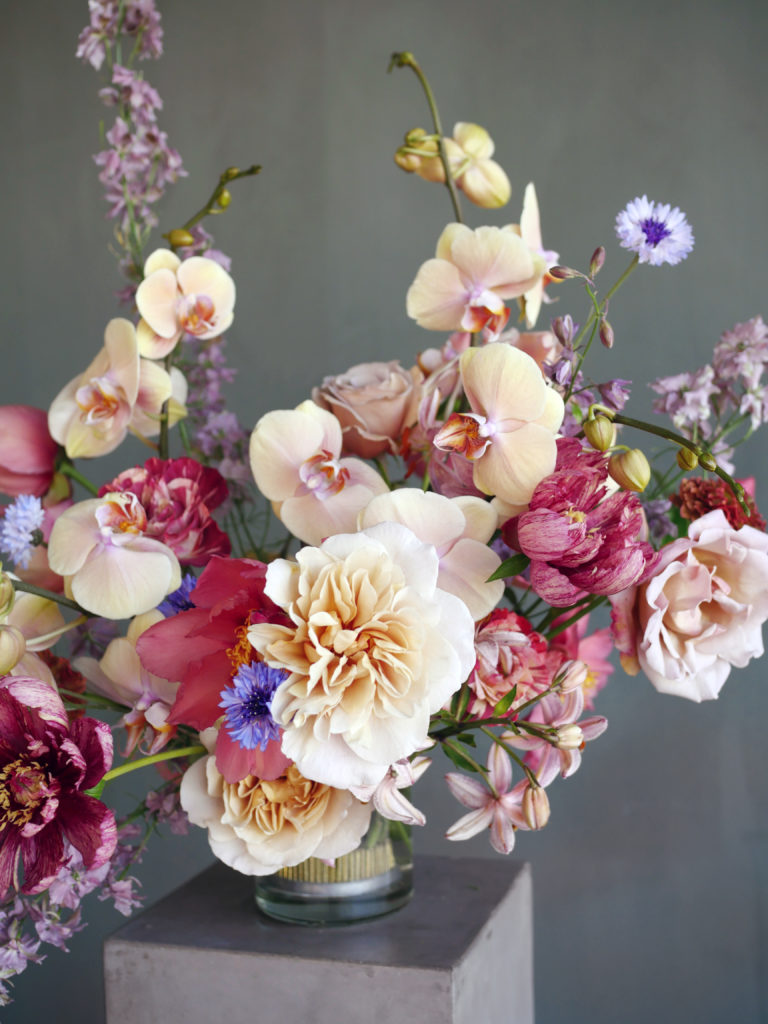
Great post!! Thank you !!
Glad you enjoyed it! xx
Inspiring. Thank you
Thank you! Exquisite demonstration 💐
Thanks for sharing! Love your work!
Where do you buy your pin frogs?
Elisabeth – The flower frog for this arrangement was manufactured in Virginia by Floral Genius (https://www.floralgenius.com/). Hope you found the tutorial helpful!
So honored to have worked with you on this!
The honor was all mine, Alyssa! So grateful for this collaboration. Your work is exquisite! xo
Wonderful tutorial, great step-by-step photographs! I’ve been buying from Floral Genius for several years now…they have quite a variety of pin holders, including hairpin holders, which are my favorites 🌿
I have never been interested in using frogs because I was never shown the technique. I am excited to try this now. Thank you for the step by step and the why! It makes so much more sense to me.
That’s great news, Alice! Let us know how it goes!
Love the detailed directions and I especially love that the working with flower frogs in retail was addressed. Terrific!
Hey Abby! I thought Alyssa’s business model for using pin frogs in retail was intriguing and was anxious to share with the BB community. Hope you find her tips helpful! xx
Is sticky putty like earthquake putty?
Not familiar with Earthquake putty, but will check it out! The most commonly used putty that we’re aware of is Floralife Sure-Stik Floral Adhesive. Hope this helps!
[…] How to use a pin frogHow To: Use a Pin Frog – Botanical Brouhaha […]
Your arrangement was gorgeous “” I have floral design 1 &3 And I’d never seen such A amazing thing”” I had to Google pic to find out wht it was”” lol
It’s truly an amazing product….thanks and it does make everything more beautiful And Not just put so together…SINCERELY MICHELLE